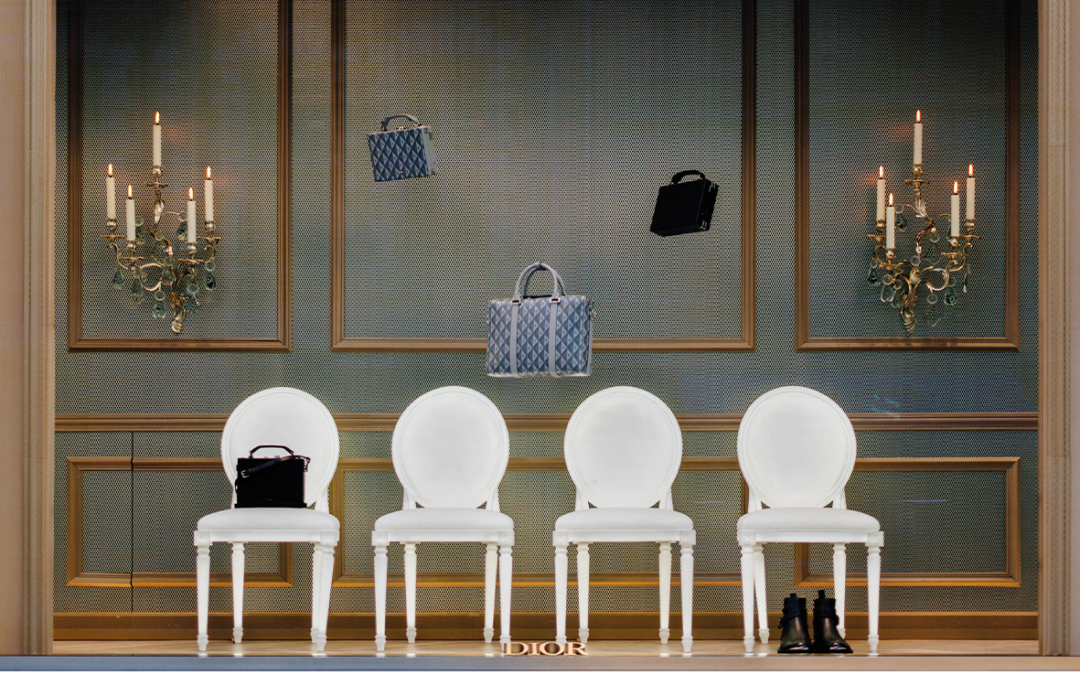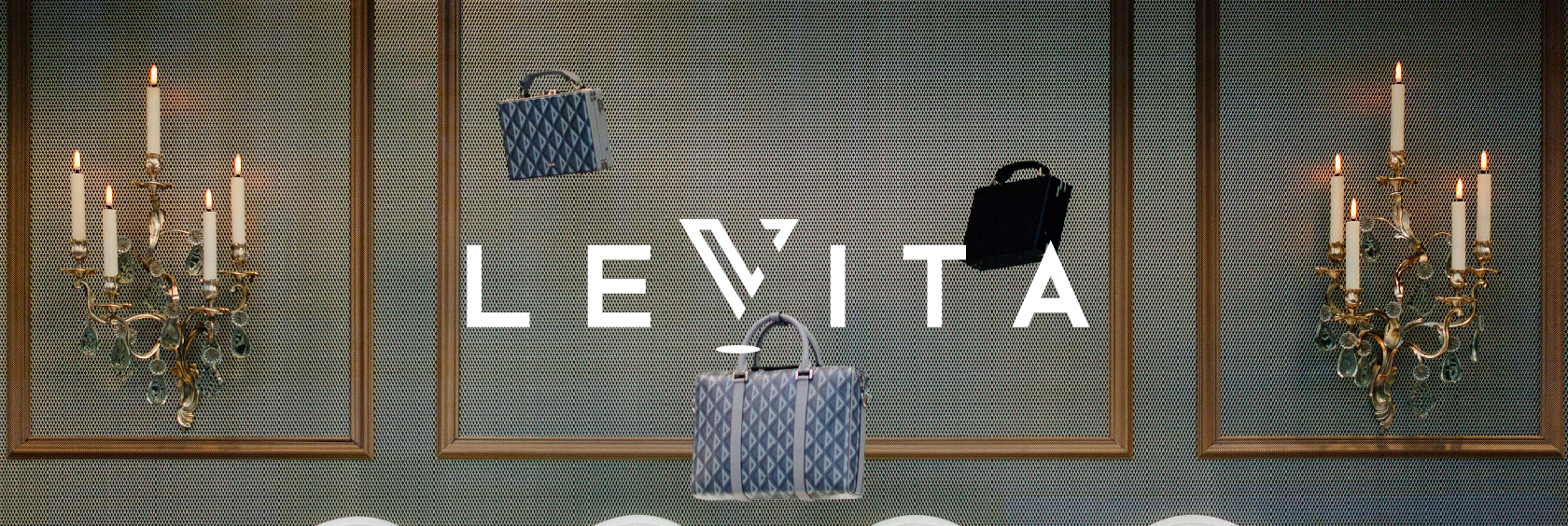
Levita x Moderne Art Fair
ESTHER DENIS – ART AND SPACE UNITED
TECHNOLOGY AT THE SERVICE OF ART
Magic at the service of art with the ephemeral installation ‘Oeuvre inversée’ by Esther Denis. Moderne Art Fair will surprise many with the installation created by Levita, partner of the fair. Levita uses neuro-aesthetics to create interactive and emotional experiences, engaging visitors through storytelling and storyliving, transforming them into active participants. In this way, Levita creates meaningful and memorable moments.
At the entrance to the pavilion, this installation offers an immersive experience by Esther Denis, using light, movement and emptiness.
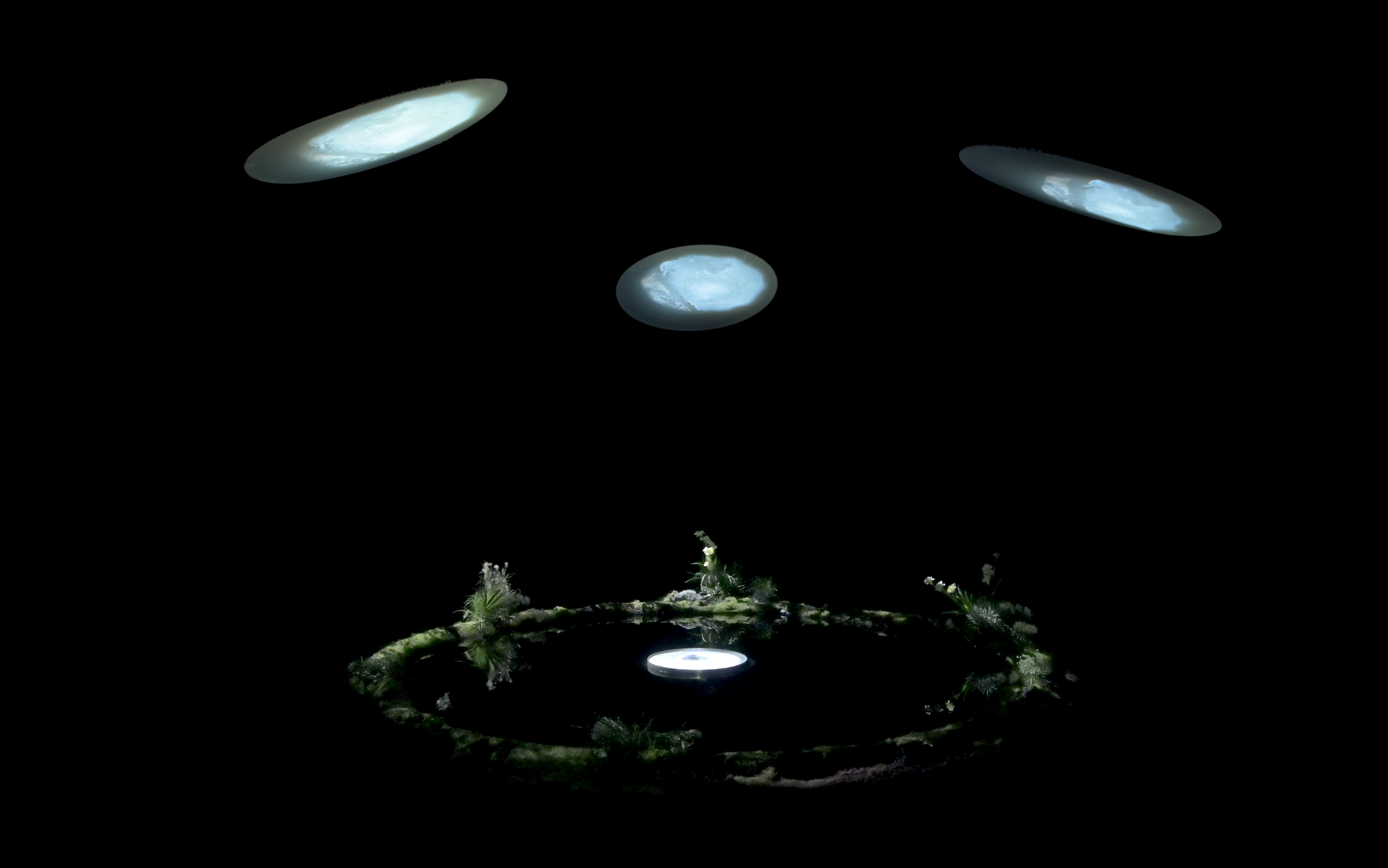
L étant
Esther Denis
© Pierre-Yves Dougnac
2021
Christian Le Dorze, fondateur du Bonisson Art Center
Founded in 2018 by two magicians, Clément and Philippe, Levita aims to help its partners ‘tell their story through movement’. Based on a levitation technology that is unique in the world, Levita’s creations are characterised by a poetic paradox: the imaginary made tangible. A finalist for the LVMH Innovation Award in 2021, Levita has been creating unforgettable experiences in the four corners of the world for over five years, thanks to its magical installations, both permanent and temporary. With the constant aim of conveying messages in a more tangible way, Levita has contributed to the birth of numerous projects and given life to many magical ideas, particularly in the field of art, through collaborations with various emblematic players in the artistic world such as the Louvre Museum, the Musée d’Asnières and Studio Drift.Founded in 2018 by two magicians, Clément and Philippe, Levita aims to help its partners ‘tell their story through movement’. Based on a levitation technology that is unique in the world, Levita’s creations are characterised by a poetic paradox: the imaginary made tangible. A finalist for the LVMH Innovation Award in 2021, Levita has been creating unforgettable experiences in the four corners of the world for over five years, thanks to its magical installations, both permanent and temporary. With the constant aim of conveying messages in a more tangible way, Levita has contributed to the birth of numerous projects and given life to many magical ideas, particularly in the field of art, through collaborations with various emblematic players in the artistic world such as the Louvre Museum, the Musée d’Asnières and Studio Drift.
Levita stands out for its mastery of a light magic, marked by minimalism and purity, based on cutting-edge, immersive and captivating technology. Freed from the need for a traditional ‘display’, levitation makes the object or work of art the sole focus of attention. There can be no purer presentation than one that frees the material from any physical interaction with external elements.
Beyond its purity, Levita’s technology is also characterised by its ability to create a relationship between object and space, a dialogue between matter and air, a bridge between reality and magic. By giving life to an object or a work of art, we enable it to interact with its environmentbut also with visitors, who can immerse themselves in its history and observe every detail. Designing experiences that appeal to the imagination and emotions allows Levita to draw on the principles of neuro-aesthetics to establish lasting links with the specific audience of its partners. Levita creates magical moments of life, moments of wonder that leave an indisputable and lasting impact on every mind.
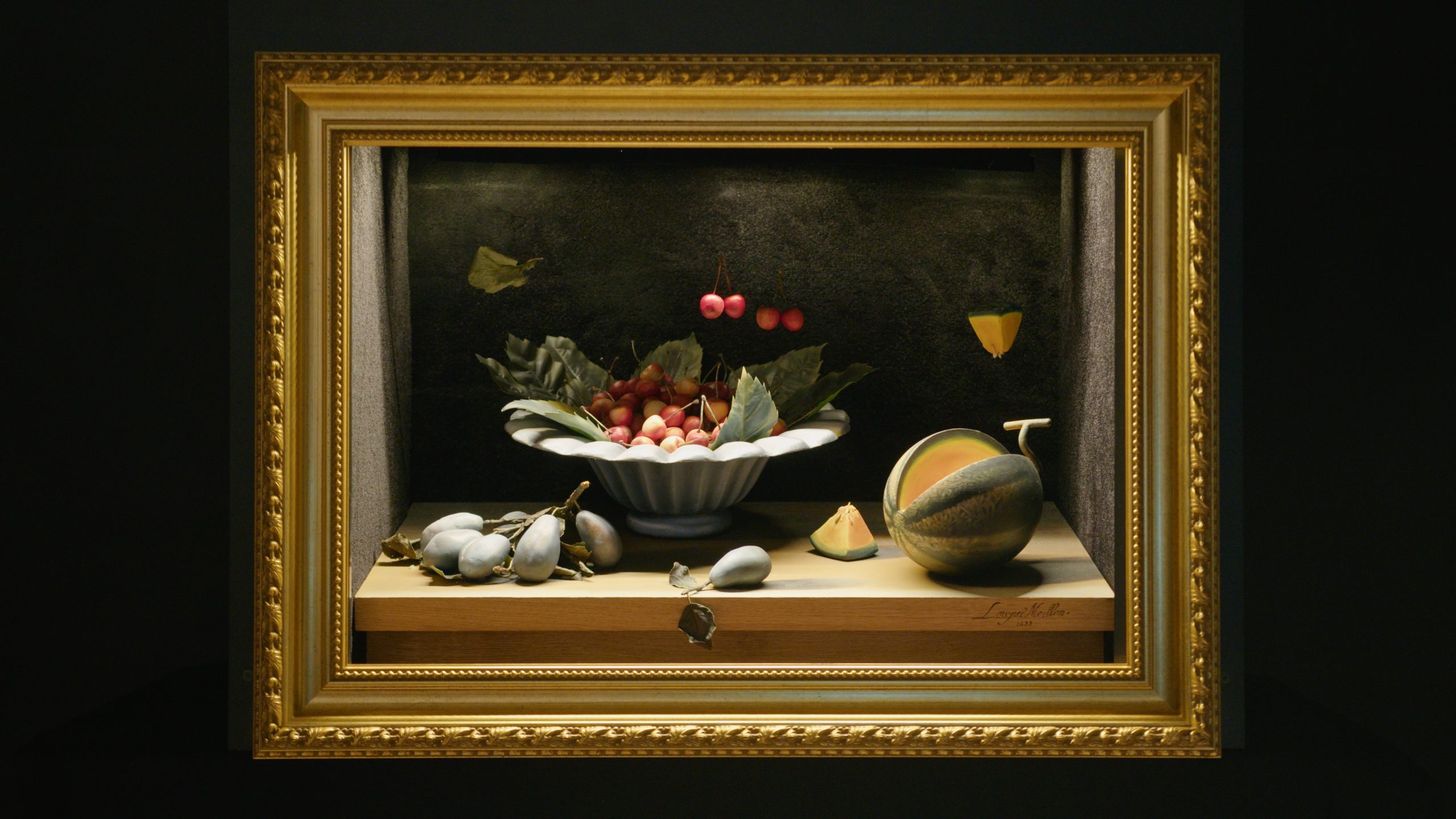
Louvre x Levita
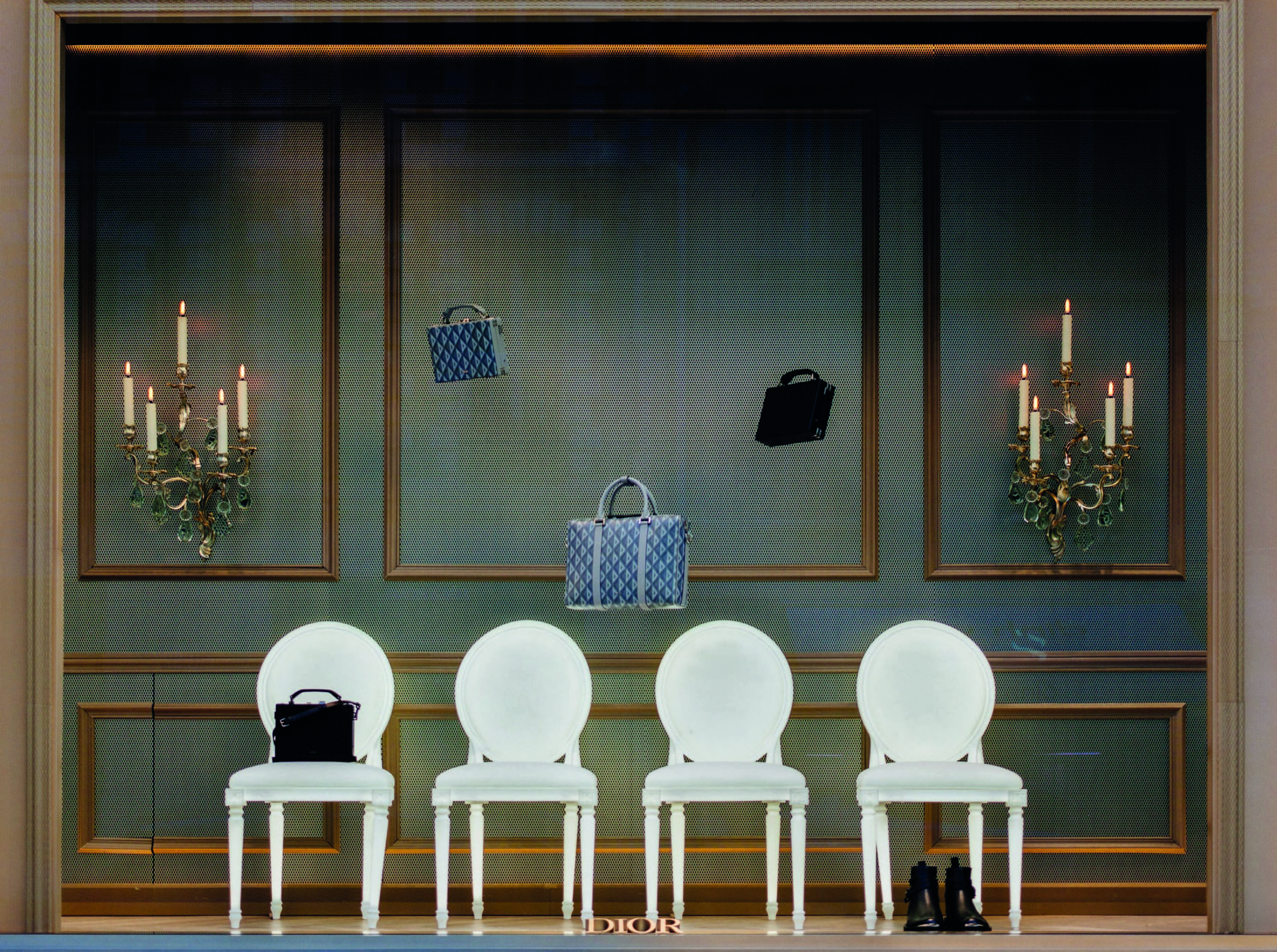
Dior x Levita
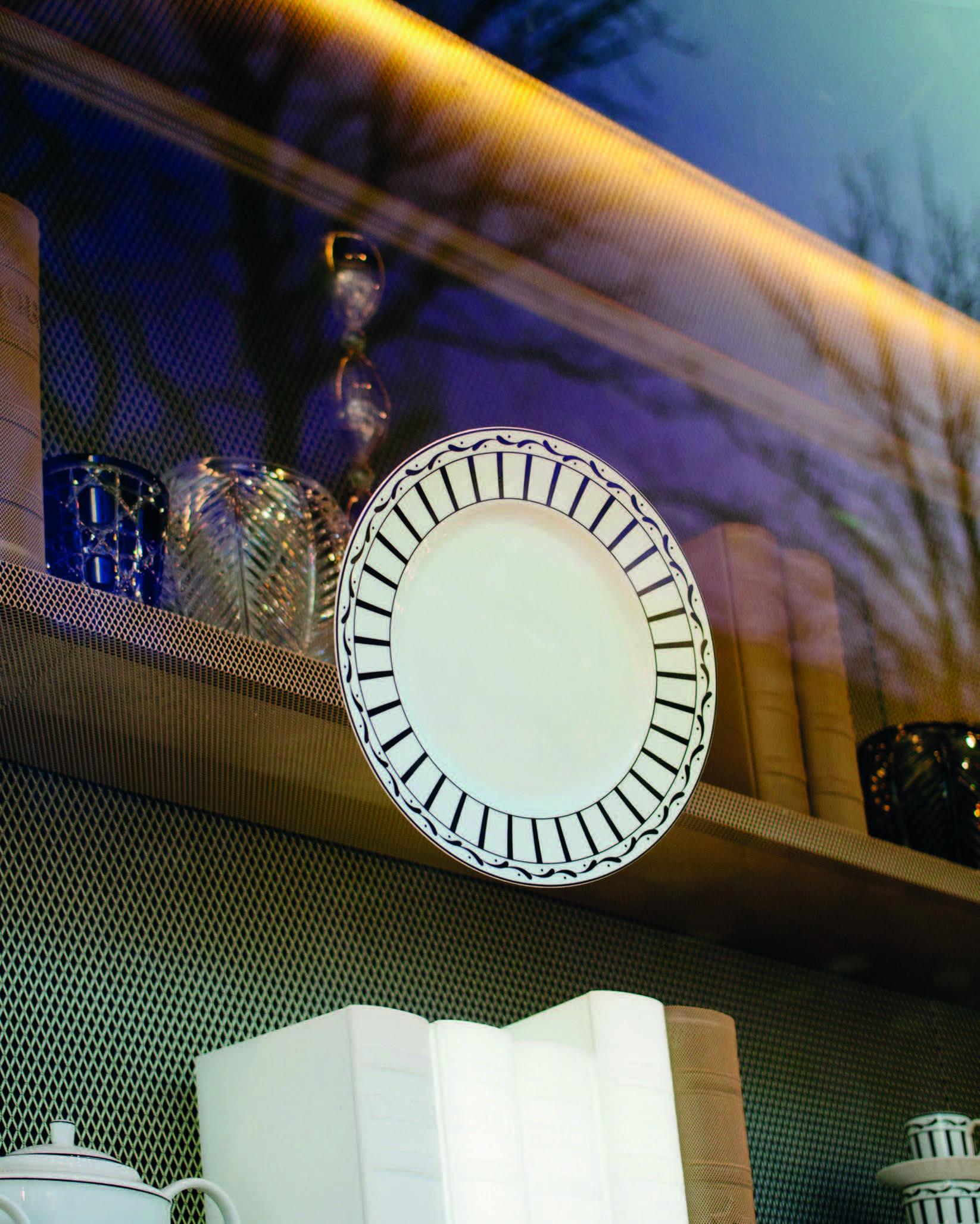
©Benoit Do Quang
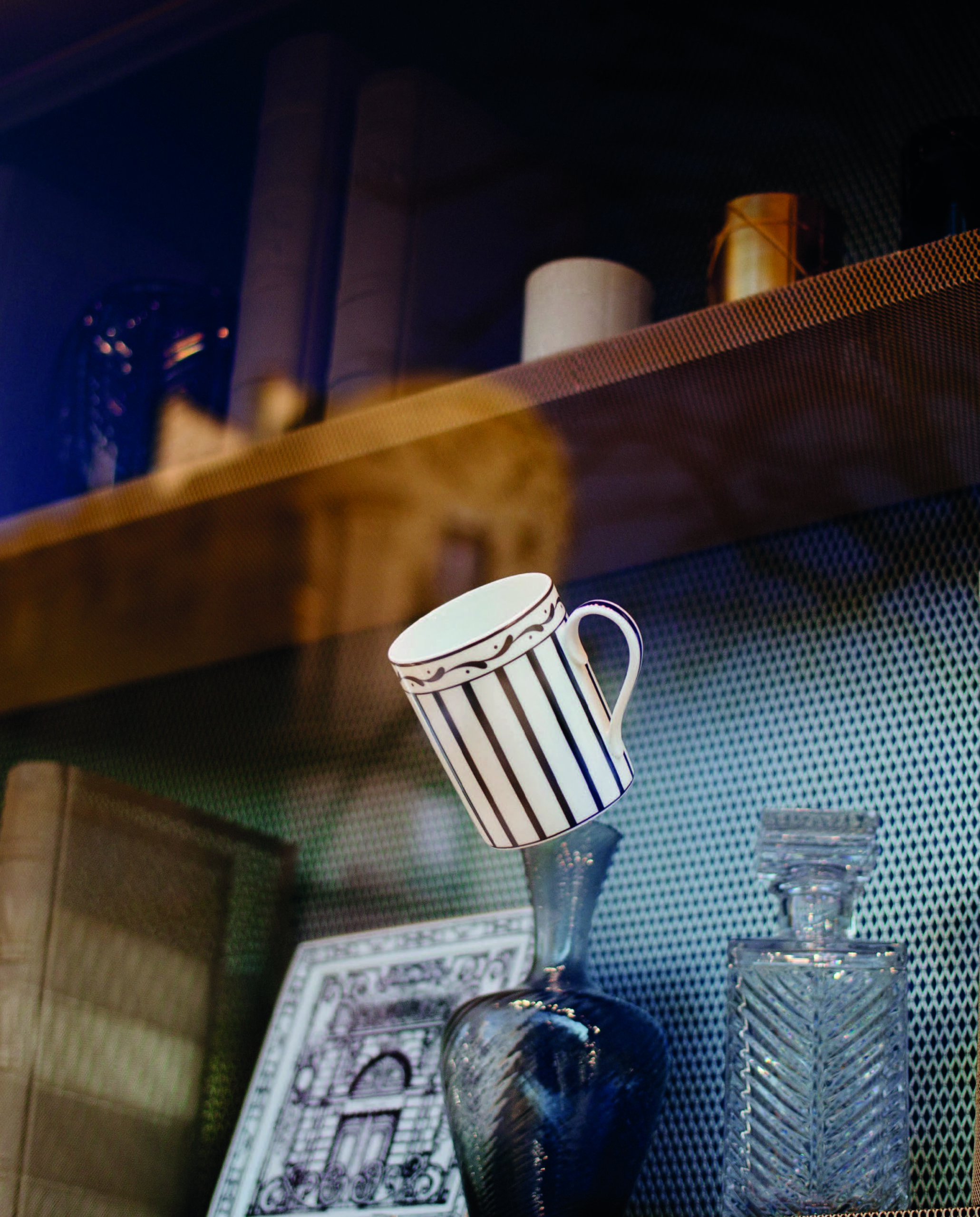
©Benoit Do Quang
Levita x Moderne Art Fair
ESTHER DENIS | EPHEMERAL INSTALLATION “OEUVRE INVERSÉE”
The mastery of space and its representations has been and still is a key issue in the history of art. It has led to major technological advances, right up to the digital modelling we are witnessing today. Space is a major issue.
The LEVITA x Moderne Art Fair project reveals the link between art and space, illustrating the ‘poetic paradox’ of Levita’s technology: the imaginary made tangible. Levita’s technology creates a bridge between the real and the imaginary, fusing matter and air, and establishing a dialogue between the object and the space in which it evolves.
Esther Denis
Esther Denis (Brussels – 1996) is a visual artist and set designer.
Her first contact with the arts and the stage took place on the stage of La Monnaie in Brussels.
As a chorister with the Children’s Choir, for ten years she lived in the world of opera directors during rehearsals and performances.
These experiences fuelled her desire to learn more about the performing and sound arts, and she studied at La Cambre in Brussels and then at the Arts Décoratifs in Paris.
Her work is a hybrid of the performing and visual arts, and focuses on optical devices for representing the living. In her work, she combines current technologies with ancient representational devices such as the diorama, the black mirror and the camera obscura. Her installations have been the subject of several solo and group exhibitions at the Grande Halle de La Villette in Paris (2021), the Grandes-Serres in Pantin (2022), the Teatros del Canal in Madrid (2022), the Galerie Sainte Anne in Paris (2022), the PhotoBrusselsfestival (2023), the Point Commun – espace d’art contemporain in Annecy (2023), and the Centre Wallonie Bruxelles in Paris (2024).
At the same time, she has a special relationship with the stage. She currently works with a number of directors, choreographers, set designers and playwrights, including Emanuelle Nizou, Louise Vanneste, Sophie Warnant, Nicolas Mouzet Tagawa and researcher and director Frédérique Aït-Touati.

Narcisse
Esther Denis
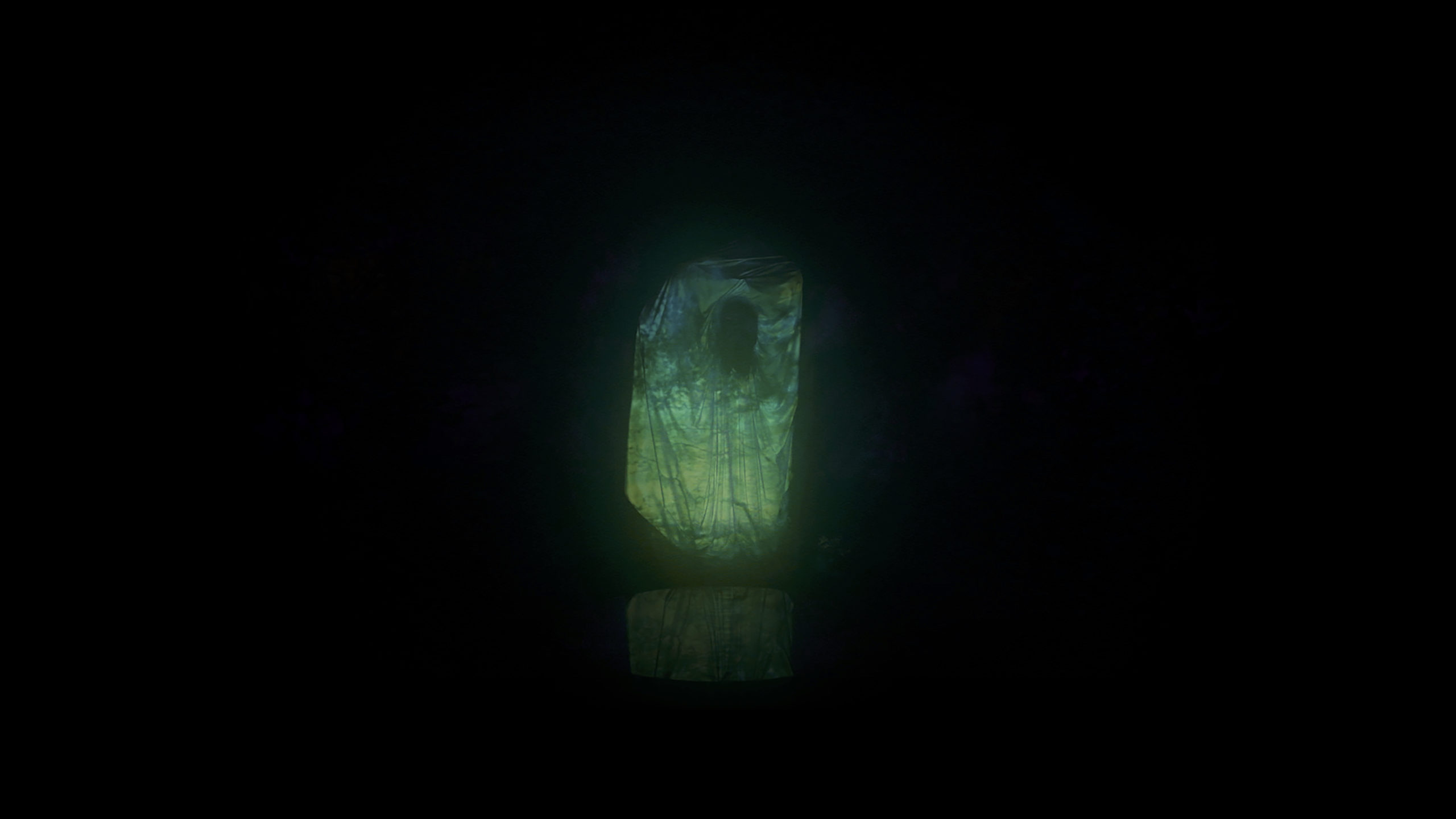
Inflorescence
© Esther Denis
2022
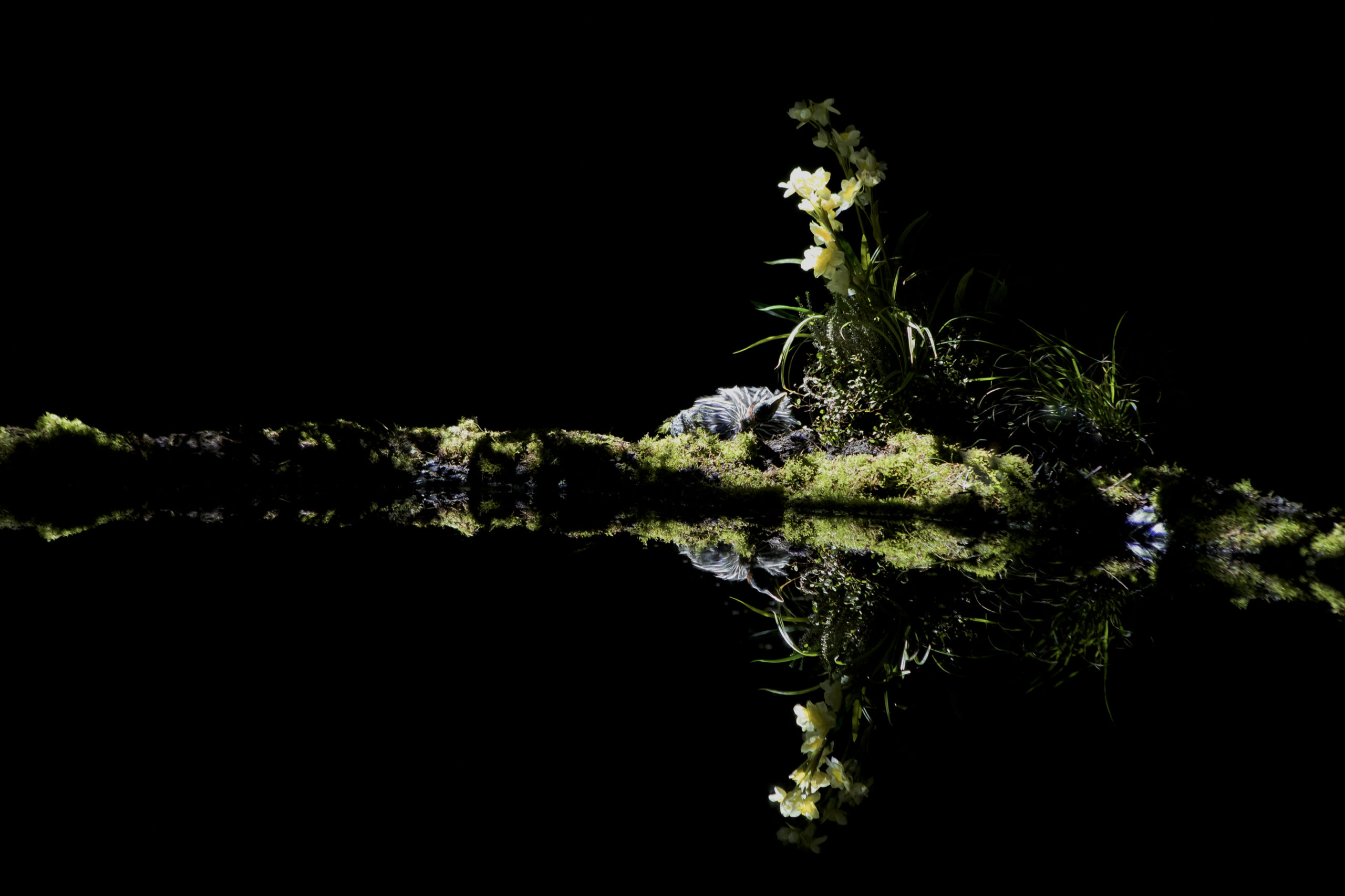
L étant
Esther Denis.
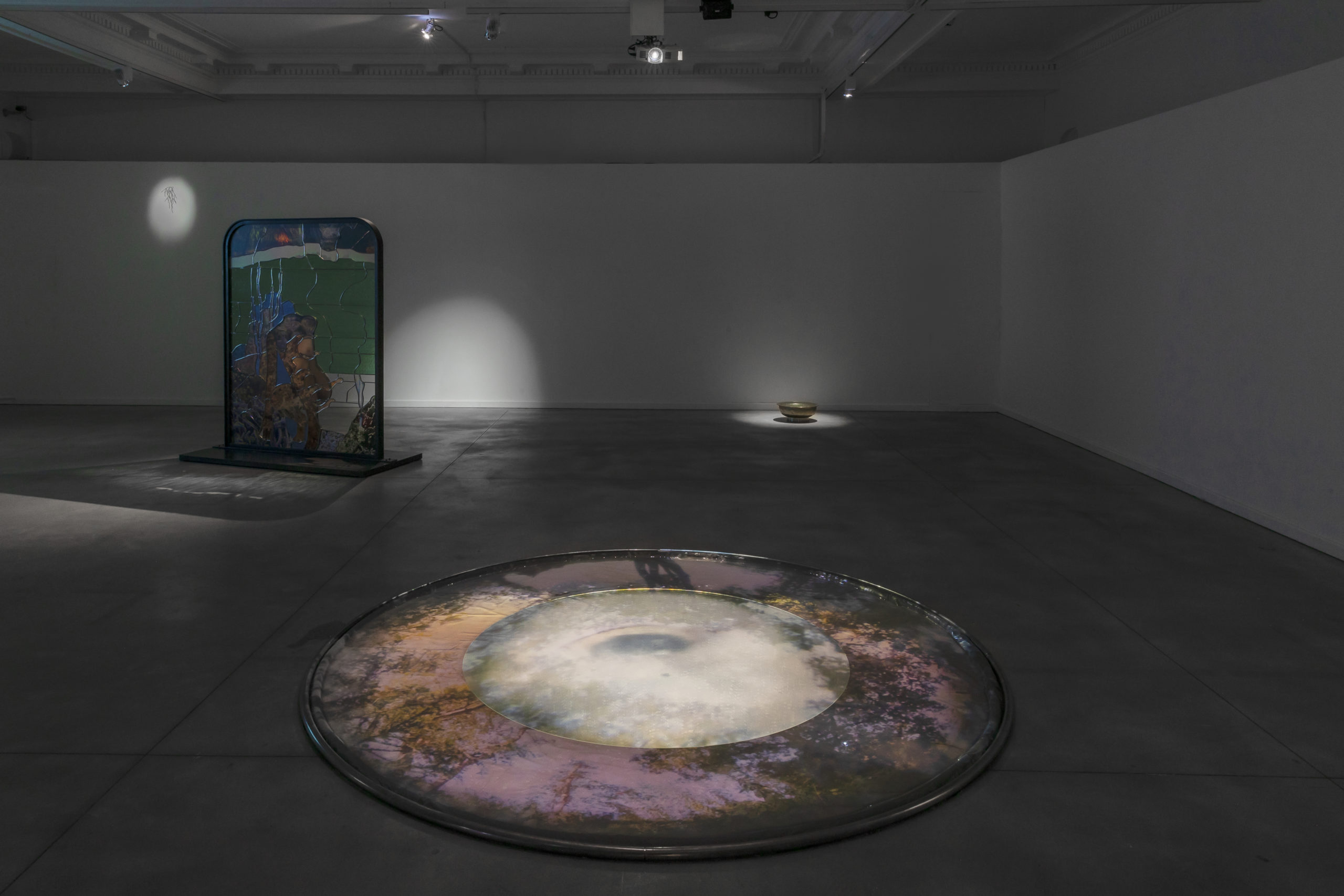
Retine
Esther Denis
© Luk Vander Plaetse
“Oeuvre inversée” | Esther Denis
In a glass case, a sheet of black water. In the murky water, reflections of another world; shadows, reflections and echoes, the ‘figures of the double’, to use the expression of the philosopher Clément Rosset, both guarantors of reality and factors of illusion. Flowers dancing by the water.
The installation aims to politicise wonder, to renew our interest in the earth, its beauty and its mysteries. This sense of wonder is anchored at the heart of a diorama, a scenographic device that historically enabled the naturalistic reconstitution of a fantasised world by setting a painting in motion. It is characterised by its formal dimension: the arrangement of elements in volume in front of a backlit painted canvas.
The diorama object fascinates as much for its technical dimension (realism, illusionary effect, etc.) as for its purpose, which is linked to the possibility of a world from another time and space. Optics and video mapping, the sense of smell and layers of sound, water and levitation are superimposed to multiply the avenues of access to the imaginary while at the same time complexifying and magnifying a cosmogonic relationship with the living.
The installation suggests the coexistence of the real and the unreal, the visible and the invisible, the living and the inert, shadow and light…

